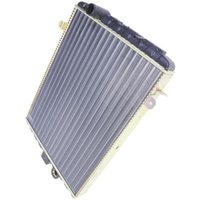A bubbling noise in your car can indicate serious problems. When the noise comes from your radiator, it is both alarming and a bit of a relief. It’s alarming because if you don’t attend to it quickly, your radiator problem can get worse and more expensive. It’s a relief because radiator problems can be repaired in a straightforward manner. Making sure you have enough coolant in the radiator can help your car run smoothly and can eliminate the bubbling in your radiator.
-
Understand that your car radiator removes heat from the coolant by forcing air through the slots in the radiator. Those slots are called "fins." When your engine overheats, the coolant can be forced into an overflow container and that creates a bubbling sound.
-
Wait for the car to cool completely before checking the coolant levels. If you open the radiator by twisting off the cap when it is not cooled, you could be hit by a burning spray. Adding coolant after the car has cooled can prevent a car radiator’s from bubbling.
-
Turn the "bleeder" screws on the cooling system components if the engine is not overheating but you hear the radiator bubbling. You may have trapped air or your cooling system may be generating carbon dioxide. Opening the bleeder screws will let the trapped air out and remove the bubbling sound. If you don’t purge the air, it could lead to future problems like overheating and thermostat malfunction.
-
Check your head gasket if the bubbling sound returns after you have purged the air or carbon dioxide. When the head gasket has been damaged, it can cause radiator issues that include bubbling.
Tips & Warnings
- Let the car cool for at least 20 minutes before adding coolant to the radiator.
